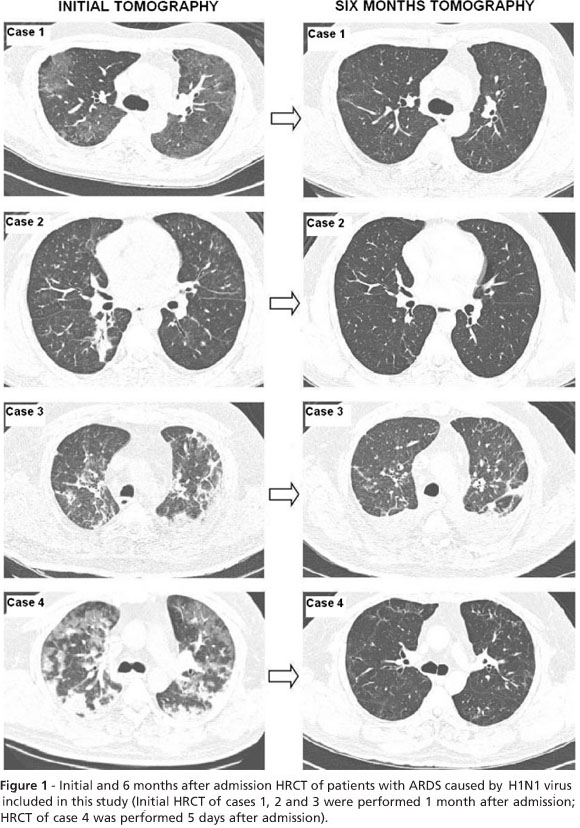BACKGROUND: There are no reports on the long-term follow-up of patients with swine-origin influenza A virus infection that progressed to acute respiratory distress syndrome. METHODS: Four patients were prospectively followed up with pulmonary function tests and high-resolution computed tomography for six months after admission to an intensive care unit. RESULTS: Pulmonary function test results assessed two months after admission to the intensive care unit showed reduced forced vital capacity in all patients and low diffusion capacity for carbon monoxide in two patients. At six months, pulmonary function test results were available for three patients. Two patients continued to have a restrictive pattern, and none of the patients presented with abnormal diffusion capacity for carbon monoxide. All of them had a diffuse ground-glass pattern on high-resolution computed tomography that improved after six months. CONCLUSIONS: Despite the marked severity of lung disease at admission, patients with acute respiratory distress syndrome caused by swine-origin influenza A virus infection presented a late but substantial recovery over six months of follow-up.
Swine-origin influenza A virus; Intensive care unit; Acute respiratory failure; Recovery; Pulmonary function test



